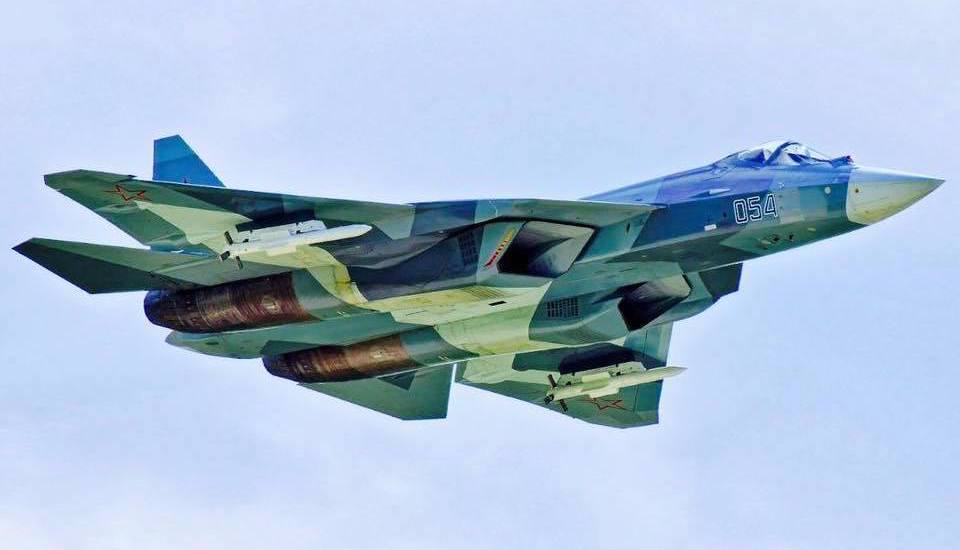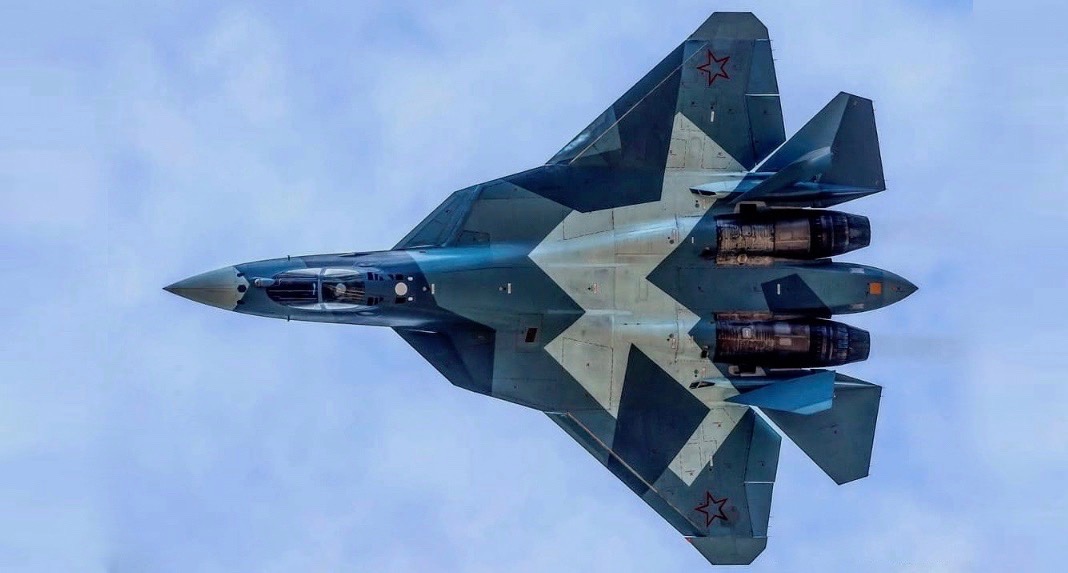The Russian government has reportedly granted authorisation for the export of the Su-57 fifth generation air superiority fighter, which is currently in low level initial production. The fighter has seen limited combat service in the Russian Air Force during its deployment to Syria in February 2018, and represents the first heavy high performance fifth generation platform to be marketed for export by any country. The Su-57 entered service following its respective U.S. and Chinese analogues the F-22 and J-20, and while the former two have been reserved exclusively for use by their manufacturing nations Russia has by contrast sought export clients for its own platform since the project was first conceptualised in the mid 2000s.

Su-57 Stealth Fighter
The Su-57 represents a replacement for the Su-27 Flanker design, which entered service in the Soviet Air Force in 1985, and is currently one of just two fifth generation fighters available on export markets - the other being the American F-35 Lighting II. The F-35 represents a very different type of aircraft however, and is not designed for high end air superiority missions. The platform is this configured for short ranged missions with a single engine and far lighter weight. The F-35 carries just half the air to air missile payload of the Su-57, is considerably slower and less manoeuvrable, and is far more restricted in its maximum flight altitude and maximum air to air engagement range. The Su-57’s superior performance specifications in most fields, with the sole exception of its radar cross section, combined with a low price comparable to cheaper F-35 variants - and likely to fall further once it begins mass production - means that the aircraft could potentially be a highly attractive export.

Su-57 Fifth Generation Fighter
Unlike the United States, which bans all export of the F-22 and is highly selective regarding its sales of even the lower end and lighter F-35 - reserved for its closest allies alone - Russia has indicated a willingness to market the Su-57 to any and all potential clients. This means that states which would be unable to acquire the F-22 or the F-35, including lower level U.S. allies, will have access to the Su-57. It was as a result of this that Viktor Kladov, the director for international co-operation and regional policy at Russia's Rostec defence industrial holding company, stated when announcing plans to export the aircraft in March 2019 that the Middle East was a region of particular interest for sales of the Su-57. A number of Arab Gulf States could potentially be leading clients for the fighter - with the United Arab Emirates (UAE) already reportedly jointly investing in fifth generation technologies with Russia. An export variant of the fighter is thus speculated to be making its debut at the Dubai Airshow in November.

U.S. Air Force F-22 and F-35 Stealth Fighters
The UAE has repeatedly sought to acquire the American F-35, though Israeli pressure has reportedly prevented such a sale to ensure a continuing advantage for Washington’s more established regional defence partner. Saudi Arabia too, while showing no interest in the F-35 and consistently favouring heavier twin engine aircraft such as the F-15SA, could potentially be interested in the Su-57 to eventually replace the older F-15C air superiority fighters in its fleet and provide it with an advantage over the increasingly sophisticated platforms deployed by neighbouring states. These include Israeli and Turkish F-35s, Qatari F-15QAs and possibly Iranian Su-30 fighters - a contract for which is reportedly currently under negotiation. The Su-57 would retain a distinct advantage over all these platforms, and remains well within Saudi means to acquire. Riyadh’s deteriorating relations with the Western Bloc in recent years, and unprecedented interest in acquiring Russian arms, could well facilitate such a acquisition - which would considerably reduce its reliance on Western equipment which currently comprises its entire fleet.

Su-57 Stealth Fighter
The Su-57 represents a replacement for the Su-27 Flanker design, which entered service in the Soviet Air Force in 1985, and is currently one of just two fifth generation fighters available on export markets - the other being the American F-35 Lighting II. The F-35 represents a very different type of aircraft however, and is not designed for high end air superiority missions. The platform is this configured for short ranged missions with a single engine and far lighter weight. The F-35 carries just half the air to air missile payload of the Su-57, is considerably slower and less manoeuvrable, and is far more restricted in its maximum flight altitude and maximum air to air engagement range. The Su-57’s superior performance specifications in most fields, with the sole exception of its radar cross section, combined with a low price comparable to cheaper F-35 variants - and likely to fall further once it begins mass production - means that the aircraft could potentially be a highly attractive export.

Su-57 Fifth Generation Fighter
Unlike the United States, which bans all export of the F-22 and is highly selective regarding its sales of even the lower end and lighter F-35 - reserved for its closest allies alone - Russia has indicated a willingness to market the Su-57 to any and all potential clients. This means that states which would be unable to acquire the F-22 or the F-35, including lower level U.S. allies, will have access to the Su-57. It was as a result of this that Viktor Kladov, the director for international co-operation and regional policy at Russia's Rostec defence industrial holding company, stated when announcing plans to export the aircraft in March 2019 that the Middle East was a region of particular interest for sales of the Su-57. A number of Arab Gulf States could potentially be leading clients for the fighter - with the United Arab Emirates (UAE) already reportedly jointly investing in fifth generation technologies with Russia. An export variant of the fighter is thus speculated to be making its debut at the Dubai Airshow in November.

U.S. Air Force F-22 and F-35 Stealth Fighters
The UAE has repeatedly sought to acquire the American F-35, though Israeli pressure has reportedly prevented such a sale to ensure a continuing advantage for Washington’s more established regional defence partner. Saudi Arabia too, while showing no interest in the F-35 and consistently favouring heavier twin engine aircraft such as the F-15SA, could potentially be interested in the Su-57 to eventually replace the older F-15C air superiority fighters in its fleet and provide it with an advantage over the increasingly sophisticated platforms deployed by neighbouring states. These include Israeli and Turkish F-35s, Qatari F-15QAs and possibly Iranian Su-30 fighters - a contract for which is reportedly currently under negotiation. The Su-57 would retain a distinct advantage over all these platforms, and remains well within Saudi means to acquire. Riyadh’s deteriorating relations with the Western Bloc in recent years, and unprecedented interest in acquiring Russian arms, could well facilitate such a acquisition - which would considerably reduce its reliance on Western equipment which currently comprises its entire fleet.

